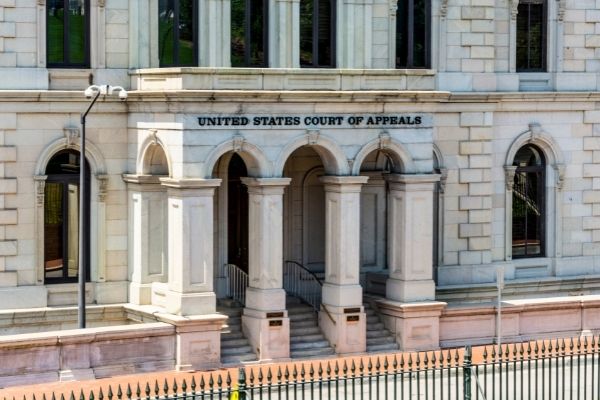Finest Federal Appeal Lawyers: Getting Justice in Federal Appeals
Finest Federal Appeal Lawyers: Getting Justice in Federal Appeals
Blog Article
Debunking the Process of Federal Appeals: What You Required to Know
Navigating the intricate realm of federal charms can often feel like passing through undiscovered waters for those strange with the procedure. Understanding the nuances of appellate court jurisdiction, the complexities of submitting a notification of appeal, providing an engaging short, and making a convincing dental disagreement are essential parts that can significantly impact the outcome of a situation. By unwinding the layers of complexity bordering government allures, people can get a more clear understanding right into the systems that govern this critical point of the legal system.
Understanding Federal Appeals Process
Exploring the complex realm of the federal appeals procedure introduces a methodical and structured trip via the judicial system. Federal allures function as a critical device for assessing choices made by lower courts. Understanding this procedure is crucial for any person associated with legal proceedings at the government level.
The process commonly starts with an event dissatisfied with a lower court's judgment filing a notice of allure. This activates a review by a greater court, where a panel of courts evaluates the lawful disagreements offered by both events. Briefs outlining the lawful reasoning behind each party's placement are submitted, and dental disagreements may be heard to make clear complex concerns.
The appellate court's decision is based on an extensive evaluation of the lower court's proceedings and the arguments presented. As soon as the appellate court gets to a decision, it can affirm, reverse, remand, or change the reduced court's ruling, offering clarity and finality to the legal disagreement.
Appellate Court Territory Discussed
Appellate court territory refers to the range of cases that a specific appellate court has the power to choose and review upon. Unlike test courts that listen to instances for the very first time, appellate courts are restricted to evaluating choices made by lower courts.
Appellate courts have territory over particular sorts of situations, generally those entailing legal errors, step-by-step issues, or inquiries of law instead than valid conflicts. The territory of appellate courts is generally detailed in laws and laws that regulate the court system. Understanding appellate court jurisdiction is critical for parties associated with the allures process as it figures out whether an instance is eligible for evaluation and the degree to which the appellate court can intervene in the reduced court's choice.
Filing a Notice of Charm
The initial step in beginning the government allures process involves filing a Notice of Charm with the ideal appellate court. This essential record officially notifies the court and the other parties included in the instance that the appealing event plans to look for a review of the reduced court's decision. Filing a Notice of Appeal is a strict procedural requirement that sets the appellate process in motion.
When preparing the Notice of Appeal, it is important to make sure conformity with the certain policies and standards of the appropriate appellate court. federal crime attorney. The document must typically include information such as the case name, the lower court's name, the day of the find out here now judgment being appealed, and a succinct declaration suggesting the grounds for the appeal

Briefing and Dental Argument
In the appellate process, offering written briefs and participating in oral debates play crucial functions in supporting for the appealing party's setting prior to the appellate court. Briefs are extensive lawful files that detail the parties' disagreements, lawful authorities, and analysis sustaining their positions. These composed entries provide the court with an in-depth understanding of the realities of the case, the appropriate regulation, and why the appealing party believes the reduced court's choice should be reversed.
Adhering to the entry and review of the briefs, dental debates use the events an opportunity to additional clarify their settings, resolve any questions the appellate judges may have, and emphasize vital factors from their written briefs. Oral arguments are a possibility for the lawyers to persuade the judges through verbal advocacy and reactions to queries from the bench.
Both the composed briefs and dental debates are critical components of the appellate process, allowing parties to present their case extensively and compellingly prior to the appellate court. - federal appeal lawyers
Receiving the Appellate Court Decision
Upon completion of oral debates and entry of created briefs, the following essential stage in the appellate process includes awaiting the decisive judgment from the appellate court. This duration of expectancy can be full of a mix of anxiousness and expect celebrations included in the allure. The appellate court's decision is normally provided in a created format and lays out the court's final thoughts on the legal concerns provided, the reasoning behind their decision, and the judgment made. The moment frame for receiving the appellate court's choice can differ, however courts strive to offer prompt resolutions. As soon as the choice is released, celebrations must carefully review the court's ruling to recognize the result and determine any more actions that may be necessary. Whether the appellate court attests, reverses, or remands the reduced court's choice, understanding the effects of the ruling is essential for all events included in the appellate process. Consequently, immediately reviewing and understanding the appellate court's decision is important in navigating the following action in the lawful proceedings.
Verdict
Comprehending the appellate court territory, filing a notice of charm, preparing briefs, and providing oral disagreements are all important elements of this process. Eventually, receiving the appellate court decision can provide clarity and resolution to legal disputes.
As we proceed from recognizing the government allures procedure to exploring the complexities of appellate court jurisdiction, a fundamental aspect comes to light regarding the authority and restrictions of these greater courts in the legal landscape. Appellate court jurisdiction refers to the scope of instances that a specific appellate court has the power to decide and review upon. Unlike test courts that listen to situations for the first time, appellate courts are restricted to examining decisions made by lower courts. Recognizing appellate court territory is important for parties involved in the allures process as it determines whether an instance is eligible for review and the level to which the appellate court can intervene in the lower court's choice.

Report this page